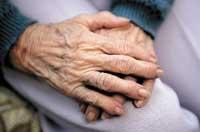Parkinson's bases
Therefore, most treatments to fight the disease increase dopamine levels in the brain or excite dopamine receptors.
Animal model
Parkinson's disease affects certain areas of the human brain. These areas are a black substance and a ribbed area, related to the motor side of the nervous system. The disease affects neurons between the two zones.

Therefore, when animal models are used to study Parkinson's disease, such as rats, in these areas there is an injury of rats. To do this, a toxic substance is injected into the rat's brain. This substance is injected into one hemisphere of the brain to store the other as a reference. That is, Parkinson acts in a single hemisphere.
Revisions start after a month of recovery. It analyzes the behavior of the rat, the effects observed from the outside and the influence of drugs. In the case of drugs, medications are given to the rat and their electrophysiological brain activity is measured, that is, the activity of neurons. In this way, the evolution of the disease can be monitored for methods to treat the disease early.
Humble Parkinson
When Parkinson's symptoms appear in humans, brain injuries are very serious and have no form of return. But, it is believed, rapid detection of the disease and the application of treatment to protect neurons could prevent the disease from progressing.
To do this, one of the first tasks will be to deepen the analysis of the drugs currently used. And is that the most used treatment, levodop, tries to protect or kill neurons. In order to analyze the consequences of this treatment in the early stages of Parkinson's disease, the model of modest Parkinson's has been created in Leioa.
Getting lower Parkinson's rats isn't easy because the exact dose of the toxic substance injected into the brain needs to be accurate. Once the dose has been reduced and a rat with low Parkinson's disease has been obtained, medicines are administered and they analyze if changes occur in the development of the disease in Leioa. As has been seen, the effects of medications vary depending on whether the rat is healthy, has a humble Parkinson's or the disease is developed.
Therefore, clear conclusions cannot be drawn at the moment. In addition, in the case of Parkinson's, as in other cases, we will have to start talking about gene therapy or therapeutic cloning shortly, since experts consider that will be the treatments that will address the disease.
- Project title
Neurodegenerative diseases; new therapeutic tools for Parkinson's disease. - The objective is
to understand the mechanisms of action of new pharmacological and surgical treatments for Parkinson's disease. - Director
Luisa Ugedo. - Working Group
I. Ulibarri, J. A. Ruiz, T. Morera, L. Grandoso, G. Bilbao, G. Linazasoro, C. Michael. - Department of
Pharmacology. - Faculty
of Medicine and Dentistry (Leioa).
Buletina
Bidali zure helbide elektronikoa eta jaso asteroko buletina zure sarrera-ontzian











